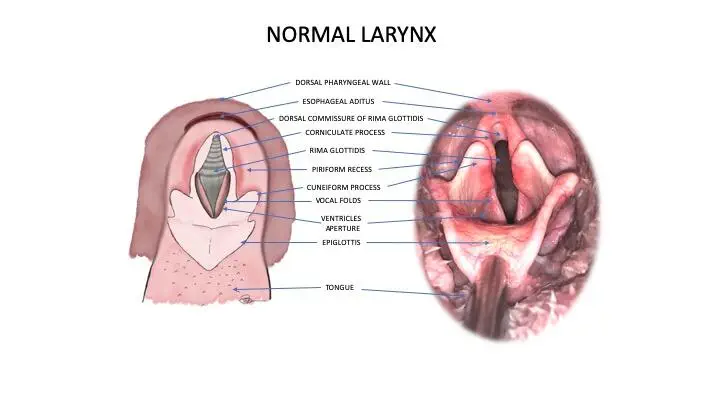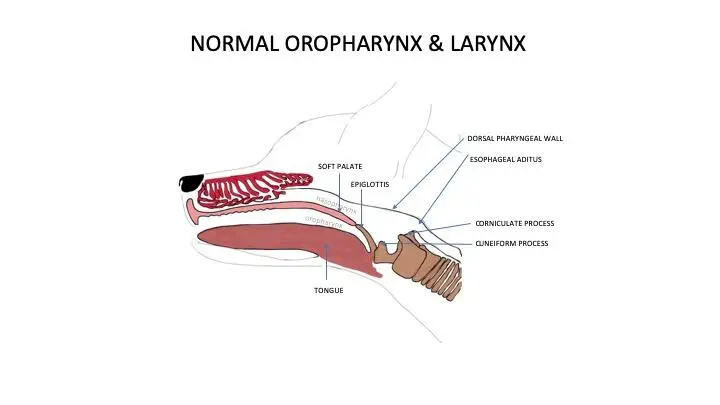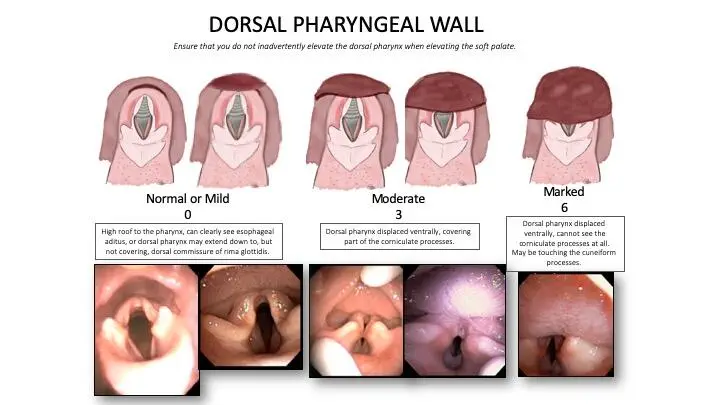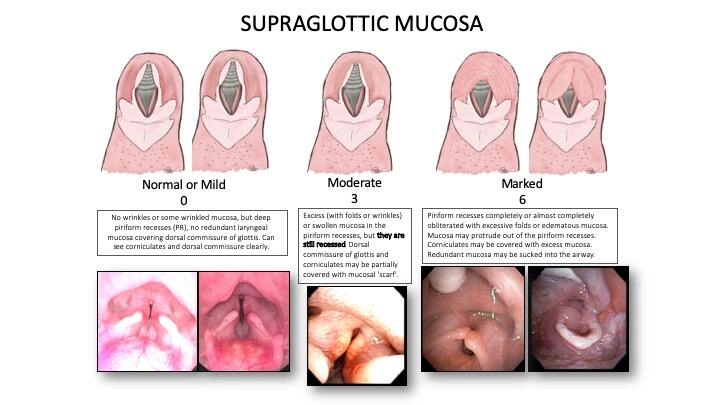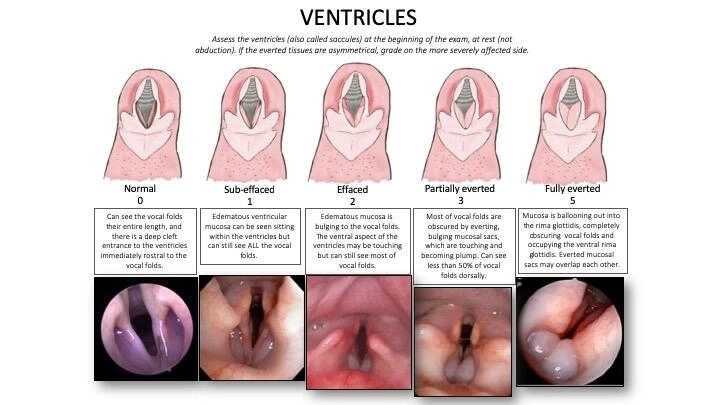Visual Guide to the NTUAS Upper Airway Exam Score for Veterinarians
The NTUAS Upper Airway Exam Score is designed to assess and grade the severity of the changes commonly seen in the upper airway of Norwich terriers. It has been developed following evaluation of 149 Norwich terriers by the study veterinarians of the NTUAS Study Group. Although a full upper airway examination* should be undertaken, the NTUAS score consists only of the variables that significantly correlate with clinical signs shown by affected dogs.
* A full upper airway examination is always recommended and should evaluate the nares, tongue, hard palate, soft palate, tonsils, pharynx (laterally and dorsally), epiglottis, hyoepiglottis and valleculae, cuneiform and corniculate processes, piriform recesses, laryngeal mucosa, vestibular and vocal folds, ventricles, immediate infraglottic lumen. Presence of phlegm, pharyngeal sensitivity, laryngeal sensitivity and laryngeal function should also be assessed. Although anatomically not part of the upper airway, it is useful to include the trachea, mainstem bronchi and choanae (retroflexed view) in an airway examination. The nasal cavity, choanae, nasopharynx and soft palate thickness can be evaluated with computed tomography using a slung maxilla positioning.
In addition to the NTUAS Upper Airway Exam Score, the NTUAS Study Group recommends veterinarians assess historical information given by owner and a 3-minute exercise tolerance test be administered.
Anesthetic Protocol for Upper Airway Examination
Developed by Dr. Sheilah A. Robertson BVMS (Hons), PhD, DECVAA, DACAW, DECAWBM (WSEL), CVA, MRCVS
Premedication:
Acepromazine 0.03 mg/kg IM + butorphanol 0.3 mg/kg IM
NOTE: Older or very calm dogs may receive acepromazine 0.02 mg/kg IM + butorphanol 0.2 mg/kg IM– this is at the veterinarian’s discretion.
Ideally time from premedication to induction is 20-30 minutes or less.
Give induction agent: Alfaxalone slowly IV or Propofol slowly IV
When the dog is relaxed place in sternal recumbency, pass gauze tape behind upper canines and sling maxilla to facilitate upper airway examination. Ensure that nothing is touching the dog’s neck as this can distort the larynx.
Oxygen can be administered by flow by, catheter or through the scope.
Continue to give induction agent to effect – top ups may be required during a thorough upper airway exam.
Dogs should be closely monitored throughout recovery until ambulatory.
Doxapram HCL 1mg/kg IV can be administered to stimulate inspiratory effort is laryngeal function is difficult to evaluate.

